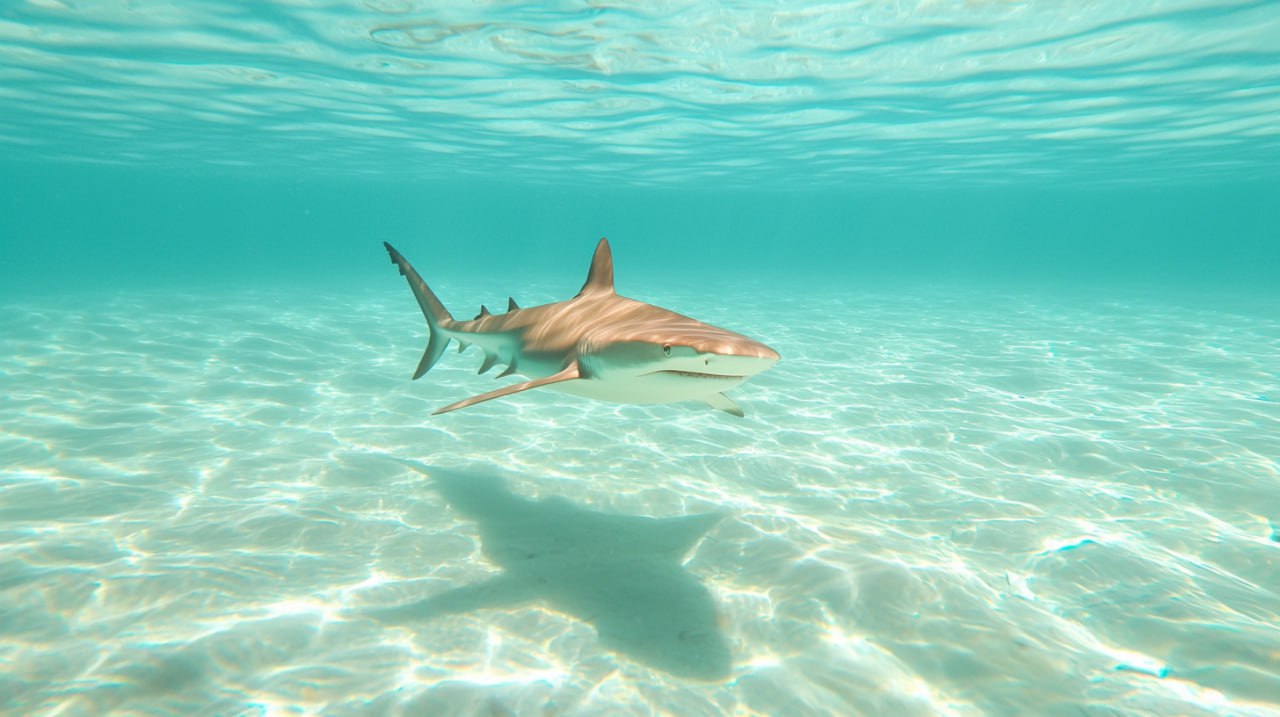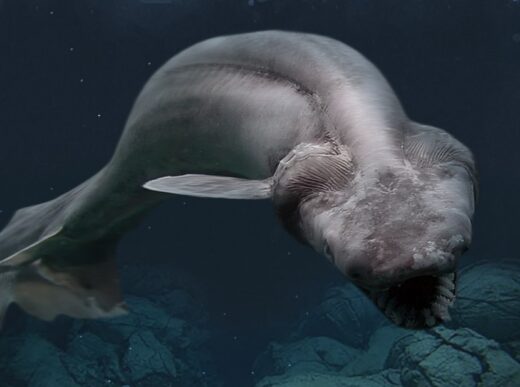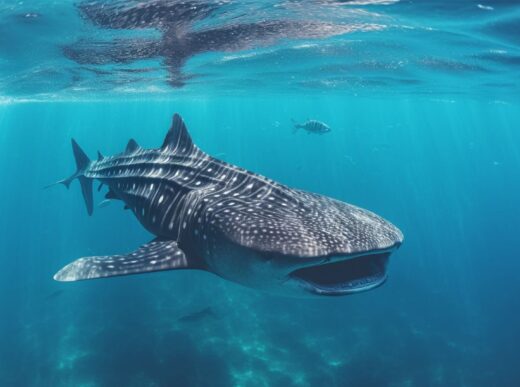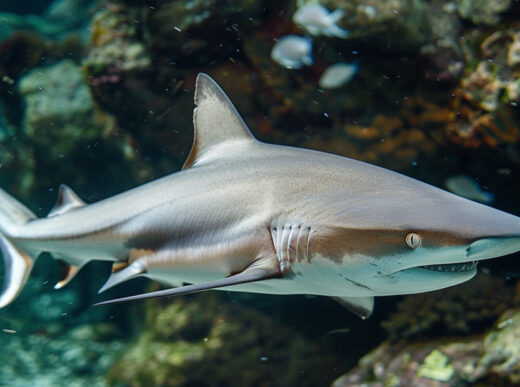Dive into the depths of the ocean with us as we reveal the intriguing world of sandbar sharks! These large and fascinating brown-colored fish are common in many seas. We’ve gathered 20 fun and fascinating facts that will help you see sandbar sharks in a whole new light. Let’s dive in and explore the wonders of these amazing creatures!
20 Amazing Facts About Sandbar Sharks
Get ready for an adrenaline-packed adventure as we dive into the deep where sharks reign supreme!
Characteristics
1. Ever wondered why they call it a «sand shark»? Well, it’s not just about where it hangs out, but also its color—a bluish-brown that’s a dead ringer for the sand at the bottom of the sea.
2. Scientists have tagged this shark with the name Carcharhinus plumbeus, which means «lead shark» in Latin. Fishers have their own lingo for it, too—the thick-skinned shark. And you might hear it referred to as the grey-blue shark as well.
3. Despite its name, the sand shark isn’t in the same family as the tiger sand shark. Nope, its cousins are the bull shark and the blue shark.
4. Want to spot a sandbar shark in the wild? Look for its super tall first dorsal fin and those long pectoral fins.
5. It’s a shark that’s just the right size—not too big, not too small. By the time it’s 10–12 years old, it’s usually grown to about 2-2.5 meters long, with the ladies usually a tad larger than the gents.
6. Now, here’s a bit of a surprise—the sandbar shark doesn’t clock in as one of the long-livers of the sea. Even though we don’t know a ton about them, scientists figure these sharks usually hang around for about 40 years.
Habitats
7. The sandbar shark calls the warm waters of the Atlantic, Indian, and western Pacific Oceans home. You can catch sight of them cruising off the shores of the United States, Brazil, China, Japan, India, and even in the Mediterranean Sea.
8. These sand sharks usually hang out right near the coastline, chilling in shallow waters. But every now and then, they’ll venture into deeper territory, sometimes diving down over 200 meters.
Lifestyle
9. It might surprise you, but even though the sandbar shark prefers to hang out in shallow waters, scientists classify it as a bottom-dwelling species. You won’t often see it breaking the surface, so there’s no need to worry about those sharp fins giving beachgoers a scare.
10. These sharks are big on seasonal travels, all thanks to shifts in sea water temperature. Come summer, they head up north, and when winter rolls around, they make their way down south.
Eating habits
11. Living down at the bottom certainly shapes the sandbar shark’s menu. It’s not picky—it chows down on a wide array of fish and loads up on rays, squid, octopus, and crabs.
12. Compared to its shark buddies, the sandbar shark’s got a bit of a gourmet streak. You won’t find any junk or non-edible stuff in its stomach—this shark’s all about that fresh and delicious meat.
Intelligence and Social Behavior
13. Sandbar sharks usually go it alone, but every now and then, they’ve been spotted forming same-sex groups. Looks like there’s some socializing going on between these ocean dwellers after all.
Reproduction
14, Just like most other shark species, the sandbar shark reproduces by laying eggs. It typically lays up to 8 eggs in its womb, where the pups develop until they hatch.
15, The sandbar shark’s pregnancy lasts for about a year, and it gives birth every two years. When the pups are born, they’re already fully formed and can measure up to 60 centimeters in length.
Population
16. Good news on the conservation front—the sandbar shark is thriving and not facing any immediate threat to its existence. Despite their slow reproduction rate, biologists have observed a yearly uptick in the population, which is a positive sign for their ongoing survival.
Danger To Humans
17. As mentioned earlier, the sandbar shark typically stays below the surface, making it hardly a concern for humans. In fact, there’s only been one recorded instance of an attack by this shark in history.
18. On the flip side, humans can pose a threat to the species. In certain regions, the sandbar shark is highly valued commercially. It’s particularly abundant along the coasts of the United States and in the South China Sea.
Are There Any Aquariums with Sandbar Sharks?
19. The sandbar shark is quite the introvert—it shies away from the spotlight and prefers the depths of the ocean. That’s why the chances of encountering one at the surface are pretty slim for the average person.
20. It’s a bit of a bummer that sandbar sharks are hard to come by in aquariums. Their lifestyle means they can only thrive in certain tanks—many are just too cramped for them. But in a select few aquariums, you might just catch a glimpse of this remarkable predator.
You can see the Sandbar shark at oceanariums:
- Georgia Aquarium, Atlanta, USA:
- Location: 225 Baker St NW, Atlanta, GA 30313, USA
- Website:Georgia Aquarium
- Monterey Bay Aquarium, Monterey, USA:
- Location: 886 Cannery Row, Monterey, CA 93940, USA
- Website:Monterey Bay Aquarium
- National Aquarium, Baltimore, USA:
- Location: 501 E Pratt St, Baltimore, MD 21202, USA
- Website:National Aquarium
- Dubai Aquarium & Underwater Zoo, Dubai, UAE:
- Location: Ground & Level 2, The Dubai Mall, Doha St, Off 1st Interchange – Sheikh Zayed Road, Dubai, UAE
- Website:Dubai Aquarium & Underwater Zoo
- Newport Aquarium, Newport, USA:
- Location: 1 Aquarium Way, Newport, KY 41071, USA
- Website:Newport Aquarium
- Adventure Aquarium, Camden, USA:
- Location: 1 Riverside Dr, Camden, NJ 08103, USA
- Website:Adventure Aquarium
- Aquarium of the Pacific (USA):
- Location: Long Beach, California, USA.
- Website: Aquarium of the Pacific
These aquariums feature a variety of shark species, including sandbar sharks, in their exhibits. It is always a good idea to check with the specific aquarium for the most current information about their exhibits and the species they have on display.




